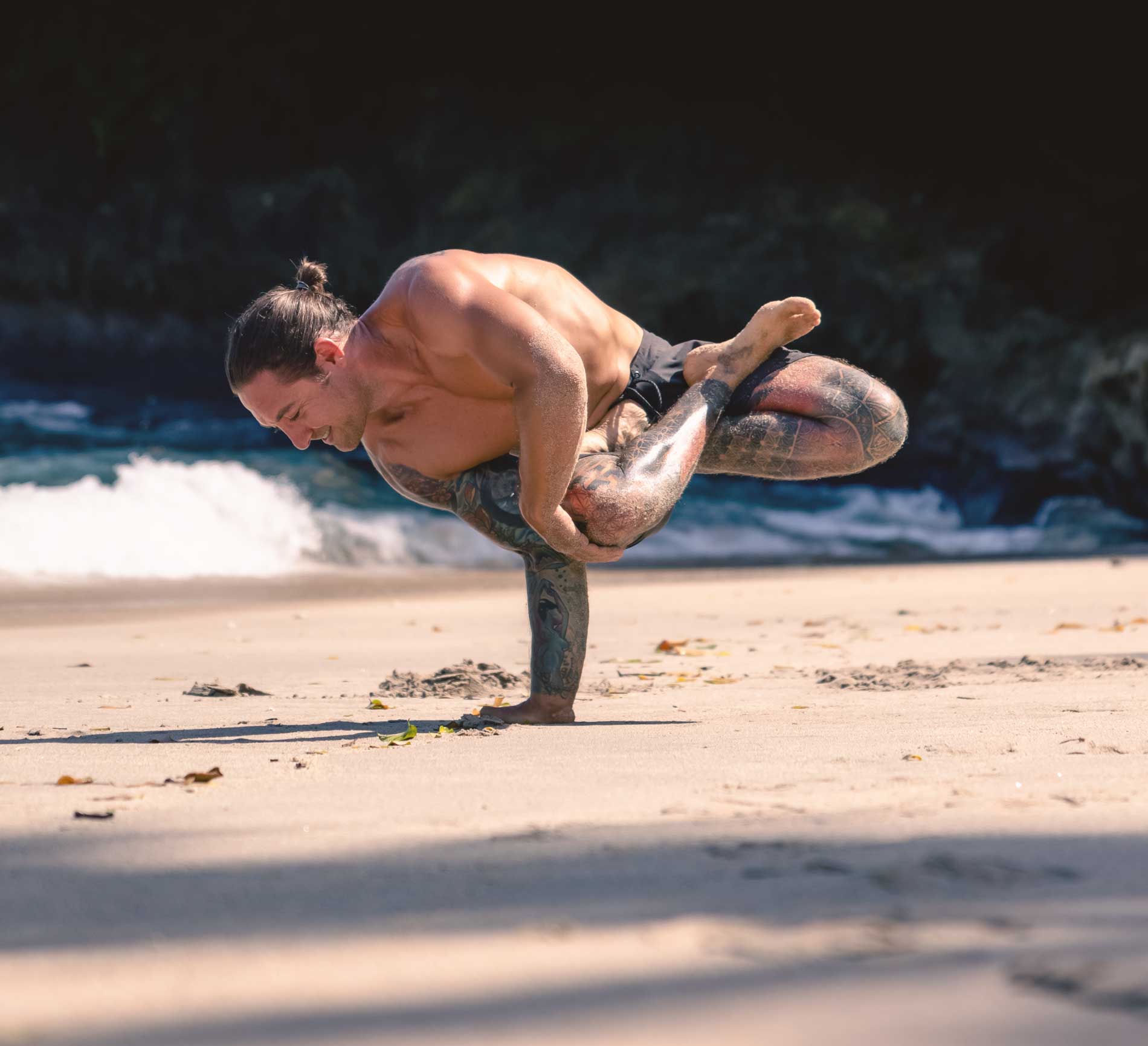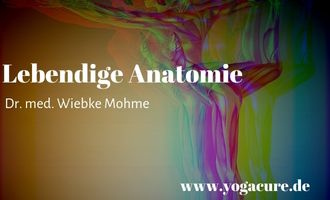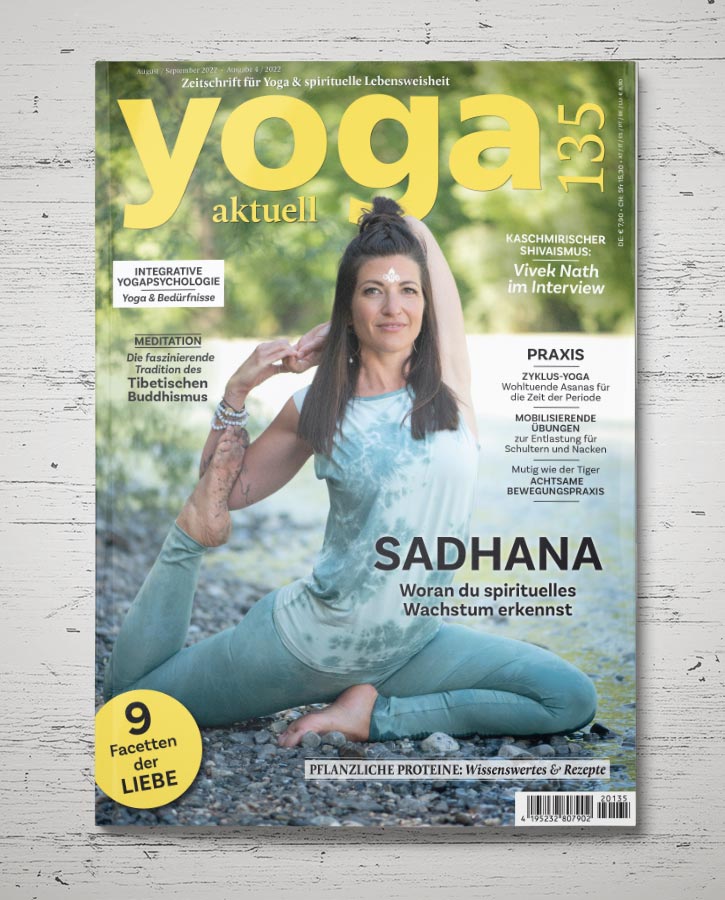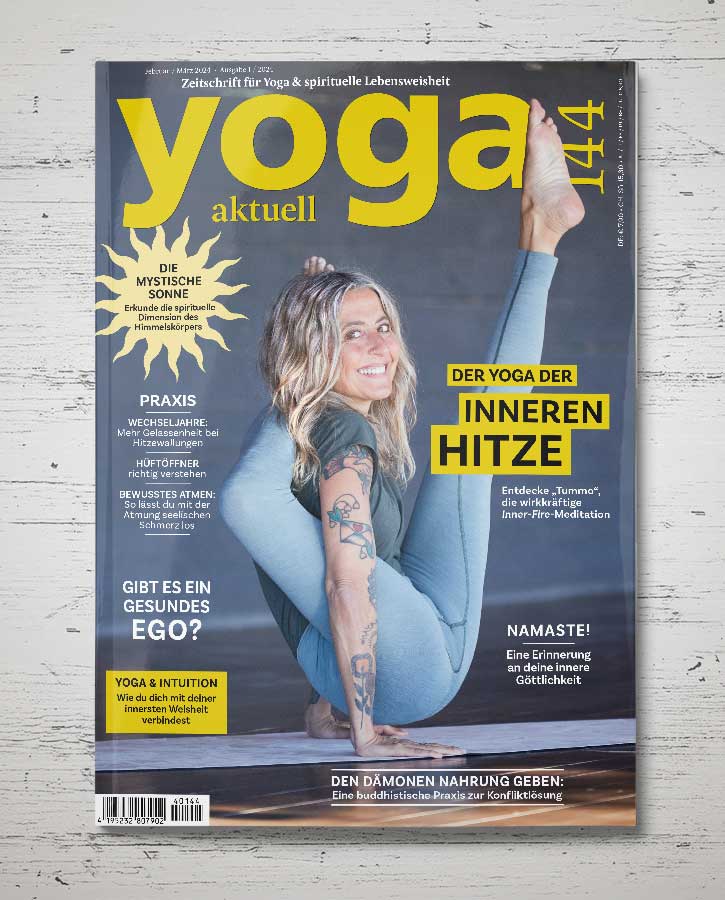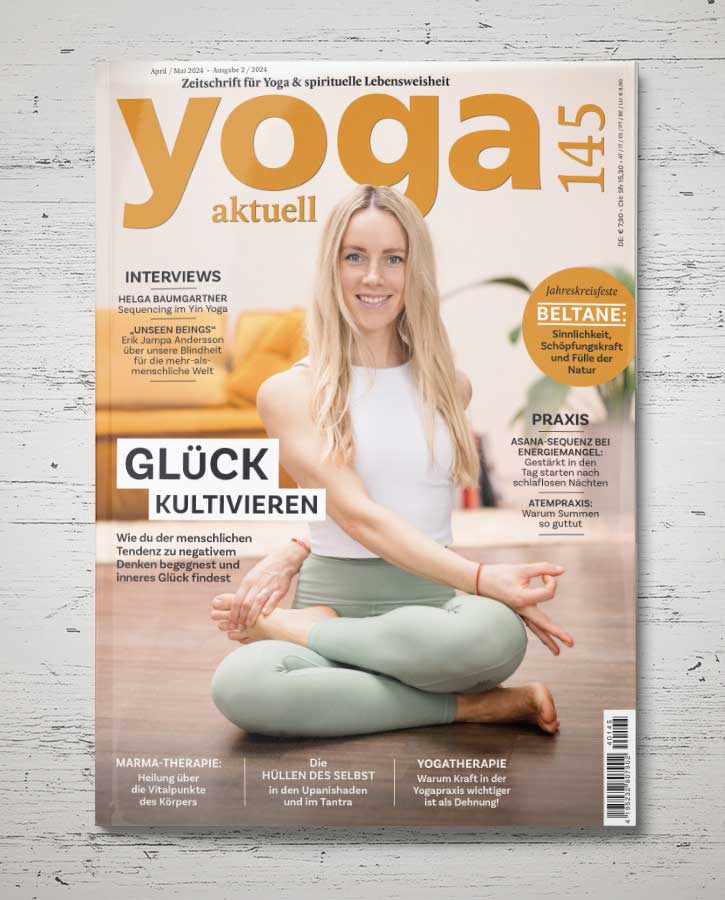After a spectacular “Rainbow Unicorn Magical Mermaid Ecstatic Dream Ride” class at the last YOGA CONFERENCE GERMANY (YCG) in Cologne we had the chance to talk to Dylan Werner, a renowned US-American yoga teacher and inversion enthusiast. We spoke about fancy workshop names, the meaning of santosha and tapas for our practice, the myofascial meridian lines and how alignment in a yoga pose can actually create misalignment in our bodies. Find out how the practice of yoga is a deeply somatic experience and why a yoga mat, some body paint and black light might do the trick to let you land in your radiant heart space.
INTERVIEW
YOGA AKTUELL: Dylan, thank you for taking some time after this epic “Rainbow Unicorn Magical Mermaid Ecstatic Dream Ride” class at the YCG. What a fancy name for a class. What was it all about?
Dylan Werner: Years ago, when I first started teaching at festivals, I was kind of known but not as known as I am these days after 10 more years of teaching. Back in the day, the names of my classes at festivals had kind of boring titles like “strength and stability foundations” – and they were kind of empty classes. I couldn’t figure out why other teachers that had no following nor name had these full classes. Looking at the names of the classes I got it: the names of their classes were fun and inviting.
With that in mind, I also invite my students at my teacher trainings when they teach a workshop to come up with names that are inviting and make students curious about what it is. This helps them when they’re trying to build an audience as a teacher.
In my Yoga Teacher Training manual, I actually gave this “Rainbow Unicorn Magical Mermaid Ecstatic Dream Ride” (which literally is the most ridiculous name!) – (laughing) – as an example. I was supposed to be here in Cologne in 2020 and teach this class, however, everything got canceled because of COVID. So here we are now in 2022 and I taught the class which I just wanted to be fun, with loud music, body paint, blacklight and just something for people to connect and be in their own radiant heart space.
I think yoga is about the ecstatic joy that we share and coming together in a community.
I just wanted to have a class that shared this universal joy that we all experience when we practice together, something to be really fun and a little ridiculous to get out of the seriousness. That’s why I’m dressed in the most brightly colored outfit that I could find with a rainbow mat and body paint.
Two years later you finally delivered your class at the YCG. Interestingly enough, these days you have a reputation, your classes are packed and they lure students in with fancy names. Looks like you’ve learned from your so-called “mistakes” and experiences in the past. Also, you’ve been practicing for over 20 years now. You started your yoga practice in the early 2000s, then paused for bit and finally took a deep dive into the world of yoga. What is it that fascinates you most about yoga and what keeps you coming back to your mat after all these years?
Yoga has always been a way for me to understand myself better and how I fit into the world and connect to the world. Yoga is this understanding of connection and truth. It has always been a mix of the philosophy and the movement. What I love about yoga is that it doesn’t differentiate the mind, the body, the breath, the spirit – it looks at it as all one thing. It’s this whole complete package.
What we like to do as people to learn and understand things better is to separate everything and compartmentalize things. And I think with movement, mind, and spirit it’s been so separated for so many years that we forgot that it’s actually just one thing. And yoga is a reminder that it is still just this one thing. It’s a coming back to what that one thing is.
It’s the intention behind the practice why I stayed with it. If I have that intention, I always feel like I’m growing. If you’re not growing, you’re dying – and I’m not ready to go down the other path just yet. Yoga continuously pushes me to grow both mentally, spiritually, and physically.
On a physical level I can tell that you’ve grown immensely. I mean you’re the master of handstands and mind-blowing inversions but how have you been grown spiritually?
First of all, I wouldn’t say I’m the master of anything, I’m very much a beginner in all things. Concerning the movement, it’s just a part of it, it’s not the main focus of my practice but when it comes to the physical practice and I move my body, I feel better about my life and myself – and I feel significantly different if I go a day without moving my body, that is without practicing. That’s what really keeps me rolling out my mat.
I’m somebody who needs challenge and needs to be pushed. Accordingly, my practice has become stronger and stronger and I do “crazier” things, I guess. But it’s only about how much can I challenge myself in the moment and sometimes it looks like really hard stuff, sometimes I’m not able to challenge myself so much.
In the yoga philosophy we have santosha and tapas in the niyamas. The beautiful thing is that santosha precedes tapas. Santosha means contentment, it’s about understanding how to be happy with where you are at. As the Buddha says the two paths of suffering are: not having what you want or not wanting what you have. Which is so true: whatever you have right there is perfect but as we move into the tapas, the inner fire grows. And with it the desire to push ourselves. We need to have growth to feel complete, but we don’t need to be different. Like a tree: a tree is always growing, always expanding but it doesn’t want to be something else than what it is, it’s still a tree. And I really try to incorporate that into my practice, to feel like I’m growing but that I’m still me and that I don’t need to add anything else to be more me.
All the spiritual lessons of yoga are easy. It’s like any truth: if it is true and real, it is self-evident. We don’t need to look into books or look after fancy gurus or motivational speakers. If there’s anything that feels like truth, we just know immediately when we hear it.
Yoga has been around for thousands of years and it’s still relevant. And I can see it. If it feels relevant and true and there is something useful for me, then I put it into my practice. For any philosophy to be a good philosophy, it has to be useful, it has to make sense. There’s no point of learning something, that’s not useful for you. And that will change. Some things might not be useful for you now, but they will be down the road. And it’s only through time and the practice that we are able to delineate between what those are.
Coming back to the physical level one more time: you’ve started to include the myofascial system into your teachings. Yesterday, I took part in your fascia tune up workshop. How come you’ve incorporated these into your practice and what is the effect on a physical level?
I’ve always been a bit of an anatomy nerd. When I started learning about the myofascial meridians, or as Tom Myers calls them the anatomy trains, they just started to make sense. Yoga is always different depending on the teacher and the practitioner – so it’s never fair to say “yoga is this…” because it’s going to be different for everybody depending on what they want from it. But for me, I got tired of making shapes. Which is funny because when it comes to handstands, I’m just looking to make shapes. But in my own physical yoga practice I got tired of making shapes and when we think about alignment, we think about alignment in a posture.
And that’s not alignment, it’s actually misalignment.
Warrior II doesn’t align me for anything, it actually takes me out of alignment. And if I just did Warrior II on the left side, I’m going to have some asymmetries in the body and some dysfunction that comes from that, maybe even pain. That is why I’m looking to realign our body through movement to its natural resting tension when we relax all the myofascial meridians which are lines of tensions, called bio-tensegrity, i.e., the system how the body is put together through tension and compression.
The meridians or the anatomy trains or whatever you want to call them are just how we kind of divide the body up and map lines of muscles and fascia for the front side of the body and from the back side of the body, etc. They are real things; they are not metaphysical things. You could dissect them off. Everything in the body is connected but that’s not really useful as far as movement goes.
Therefore, we need to find some kind of separation so that we can move through it. Each myofascial meridian has a purpose and they’re meant to balance themselves. When I’m teaching and sequencing, I’m looking to create balance into the body: whether it’s between antagonistic lines (which mean they oppose each other and so the opposites create balance, e.g. the superficial frontline and the backline) or they’re balancing lines (e.g. they have a left and right like the spiral line, the left spiral line balances the right spiral line) or they are synergistic lines (meaning they work really well together, e.g. the spiral line and the lateral line share the same muscles but they’re just changing by the direction of tension).
Through a process of understanding these things and sequencing movement to either create strength or release tension, we’re able to move the body back into a healthier alignment. Removing these asymmetries can help to remove pain and dysfunction and restore the body’s natural alignment or resting tension.
If we think of shavasana when you let everything go and the body melts into the place that it wants to be. For a lot of us it’s different from one side to the other. This comes from moving, being right-handed or left-handed, right-eyed or left-eyed and because we are predominantly one-sided, our body is going to be asymmetrical, just naturally.
If you look on the outside, we’re asymmetrical, but the insides are also asymmetrical. We’re not trying to make things exactly the same, but the intention is to even it out so that I don’t have one shoulder that’s pulling forward, my spine is not twisted to one side. And movement is a fantastic way to do that. That’s what I try to do through my teaching of yoga: through movement I structurally integrate these poses to realign the body into its healthiest form so that we can grow old gracefully and stay young in our body at the same time.
Using the myofascial system on the physical level in your yoga flows, does it enable us to dive even deeper into the energy body?
Moving through the properties of fascia – which is quite a deep learning curve as far as it goes to sequencing, with regards to with what you need to know (i.e. plasticity, elasticity, viscoelasticity, how fascia transmits force and how it remodels itself), that’s pretty challenging. But when you’re moving through one of my classes, it’s not meant to be an intellectual experience, it’s meant to be a somatic experience. By moving through tension in the body, you’re able to feel things in the body. You’re not moving to try to create a pose or a shape, you’re moving to try to create a feeling.
And I think if you move to create a feeling, it creates a different experience and that could bring you deeper in touch with yourself on how you feel and also your ability to release and let go of things as well because you’re moving into that place of feeling…
And that’s kind of the core of the yoga, isn’t it?
For me it is but everybody gets to decide what it is for them. But since you are asking me… (laughing)
Well, that’s kind of what it is for me, too. (laughing) Thank you very much, Dylan for the interview.
It’s been a pleasure.
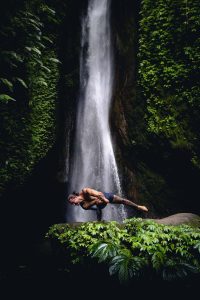
Dylan Werner is a renowned international yoga instructor, author, lecturer, and educator. His extensive knowledge of anatomy and physiology and deep understanding of Eastern philosophy lend a unique perspective to his teachings. A former United States Marine and Iraq War veteran turned city firefighter/paramedic, Dylan left his career to pursue a life of teaching movement and mindfulness. Dylan has been teaching since 2011 and has taught hundreds of global workshops, trainings, and events.
Mehr von Dylan:
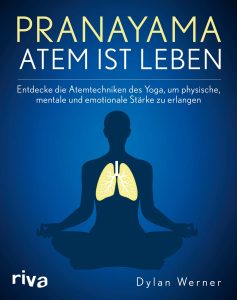
Dylan Werner: Pranayama – Atem ist Leben: Entdecke die Atemtechniken des Yoga, um physische, mentale und emotionale Stärke zu erlangen. riva Verlag 2022.
|
Upcoming trainings and workshops: |


